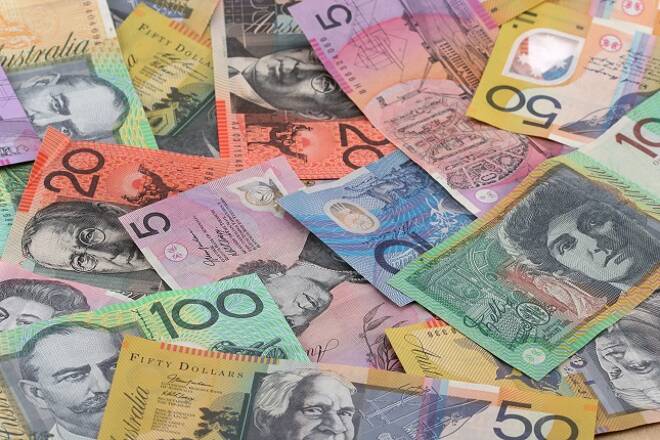Advertisement
Advertisement
AUD/USD and NZD/USD Fundamental Weekly Forecast – Grim Economic Outlook to Weigh on Prices
By:
The Kiwi is expected to remain under pressure after the RBNZ expanded its asset purchase program and discussed negative interest rates.
It was a tough weak for the Australian and New Zealand Dollars with investors dumping the currencies on fears of a recession in Australia and talk of negative interest rates in New Zealand. Escalating tensions between the United States and China also weighed on prices with investors fearing the start of another trade war.
Tensions between Australia and China over the cause of the Coronavirus pandemic also encouraged investors to shed their speculative long positions. However, losses may have been limited by optimism as both countries begin to relax virus-related restrictions.
Last week, the AUD/USD settled at .6416, down 0.0114 or -1.75% and the NZD/USD finished at .5934, down 0.0203 or -3.30%.
Australian Dollar
The Australian Dollar started to feel downside pressure after China suspended imports from four large red meat slaughterhouses, fueling concern of a campaign by Beijing against Australian producers in response to Prime Minister Scott Morrison’s push for an independent coronavirus inquiry.
The meat exports freeze follows China’s threats to impose severe anti-dumping tariffs on Australian barley exports, worth $600 million due to drought last year.
Political tensions between Australia and China have ratcheted up sharply since the beginning of the coronavirus pandemic, culminating in a warning last month from China’s ambassador, Cheng Jingye, that Chinese consumers could choose to boycott Australian products such as beef and wine out of patriotic sense of duty. Australia will push for a global independent probe into the origins of COVID-19 at the World Health Assembly this week.
In other news, Australia’s Unemployment Rate posted its steepest monthly rise on record, with 594,000 people losing their jobs in April as restrictions to limit coronavirus shut thousands of businesses and affected many more.
Nearly 600,000 people lost their jobs last month, while another 600,000 saw their working hours cut back. Unemployment jumped 1 percentage point to 6.2 percent, which would have been much worse except that many people did not look for work. In all, the ABS said 2.7 million Australians either lost their job, had their hours reduced or left the labor force last month.
New Zealand Dollar
The Reserve Bank held its benchmark interest rate at a record low, but intends to buy back more government bonds to support the economy.
The official cash rate was kept steady at a record low of 0.25 percent, as economists expected.
Reserve Bank (RBNZ) governor Adrian Orr said the COVID-19 pandemic’s impact on growth would last a long time in New Zealand and overseas. “The global economic disruption caused by the COVID-19 pandemic is expected to persist and lead to lower economic growth, employment, and inflation both in New Zealand and abroad.”
“Even if New Zealand successfully contains the spread of disease locally, reduced world activity will mean lower demand for many of New Zealand’s exports,” Orr said.
Orr also said monetary policy would be secondary to government spending programs in countering the pandemic effects, but the RBNZ’s bond buying would be suitable and a necessary ally to government action.
Weekly Forecast
Although the Coronavirus case and death numbers in Australia and New Zealand are impressive, traders are focusing on their respective economies and their relations with China. Furthermore, investors are also keeping an eye on demand for risk and the escalating tensions between the United States and China.
In Australia, the long-term economic outlook remains grim with house prices and income expected to fall. Furthermore, with Prime Minister Scott Morrison telling Australians that they should brace themselves for further hard news, the selling pressure is likely to continue to drive the AUD/USD lower.
Federal Treasurer Josh Frydenberg said, “There is still a long way to go and the economic numbers will get worse before they get better.”
In New Zealand, the Kiwi is expected to remain under pressure after the RBNZ expanded its asset purchase program and indicated readiness to take further step – including negative interest rates.
About the Author
James Hyerczykauthor
James is a Florida-based technical analyst, market researcher, educator and trader with 35+ years of experience. He is an expert in the area of patterns, price and time analysis as it applies to futures, Forex, and stocks.
Did you find this article useful?
Latest news and analysis
Advertisement
